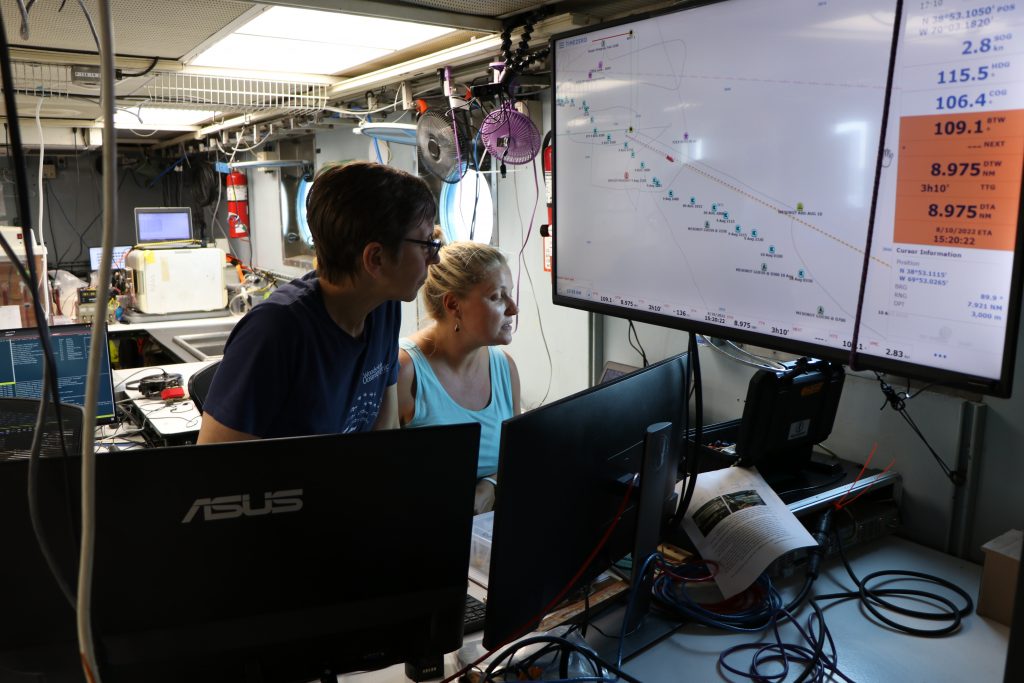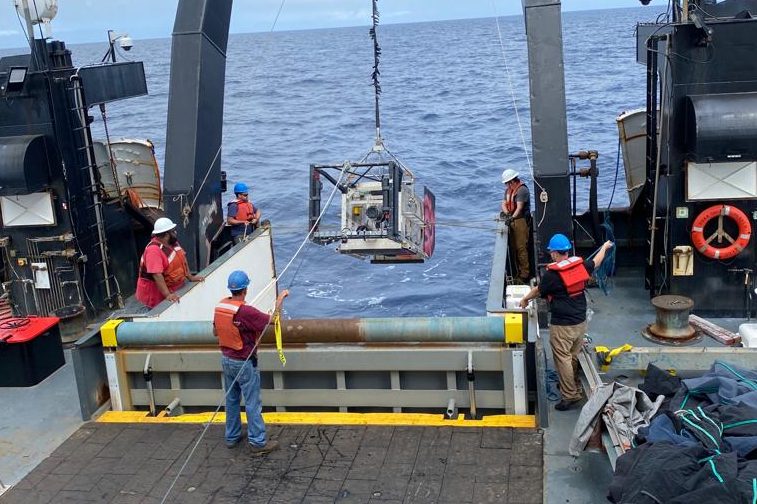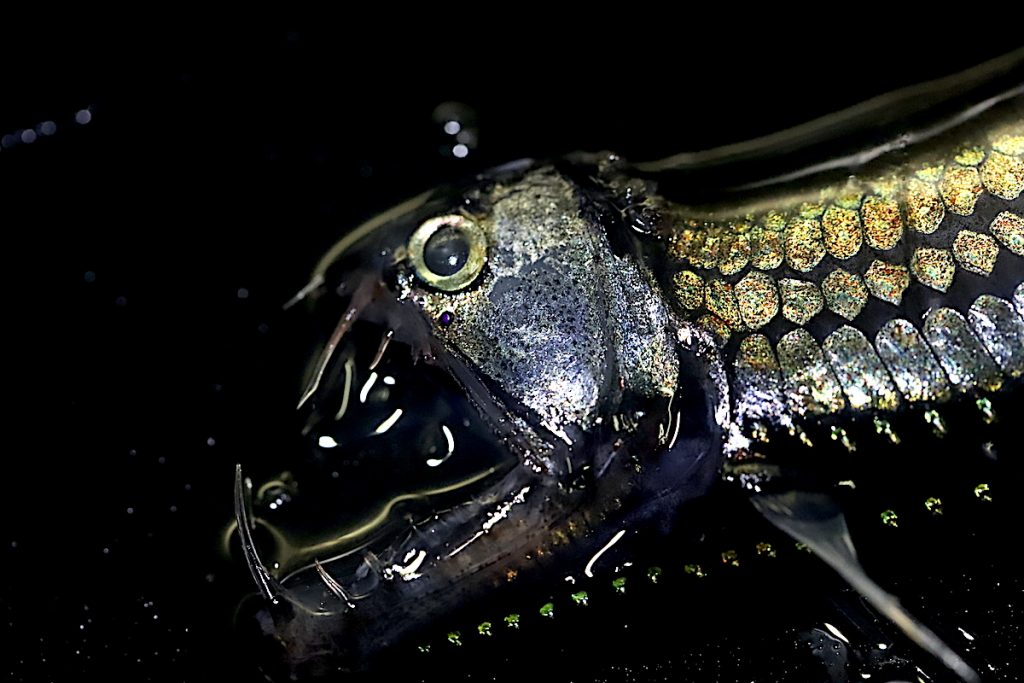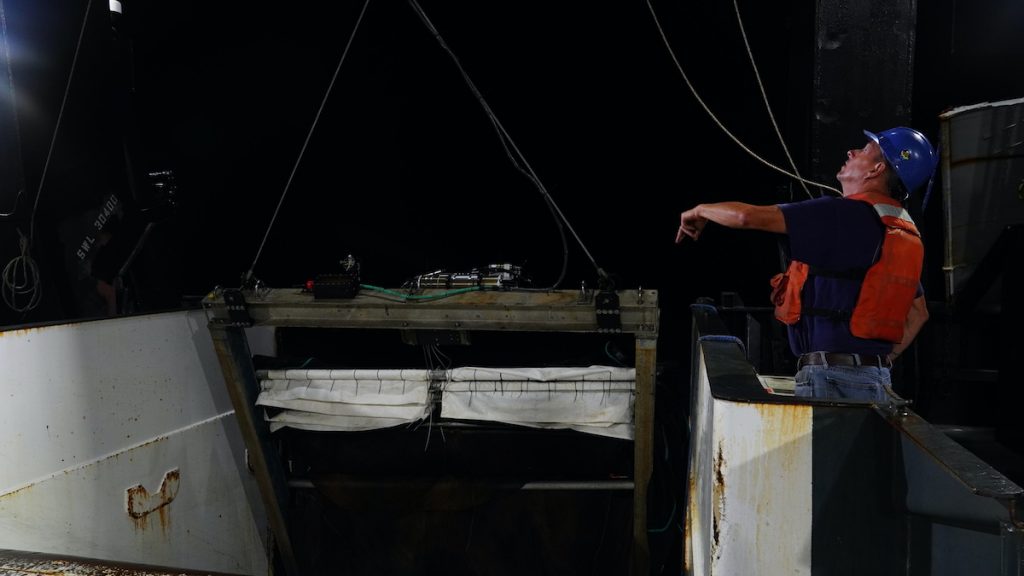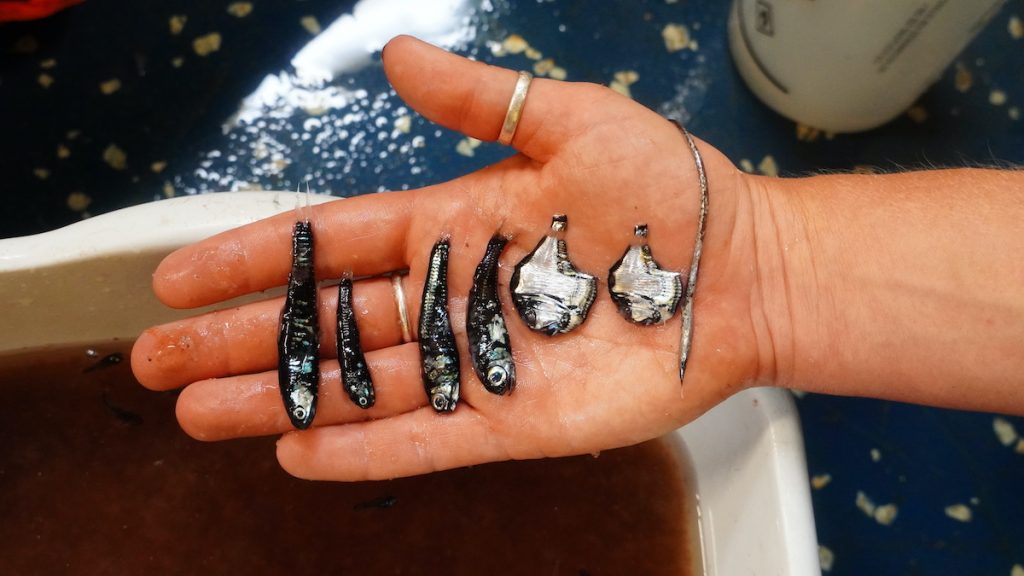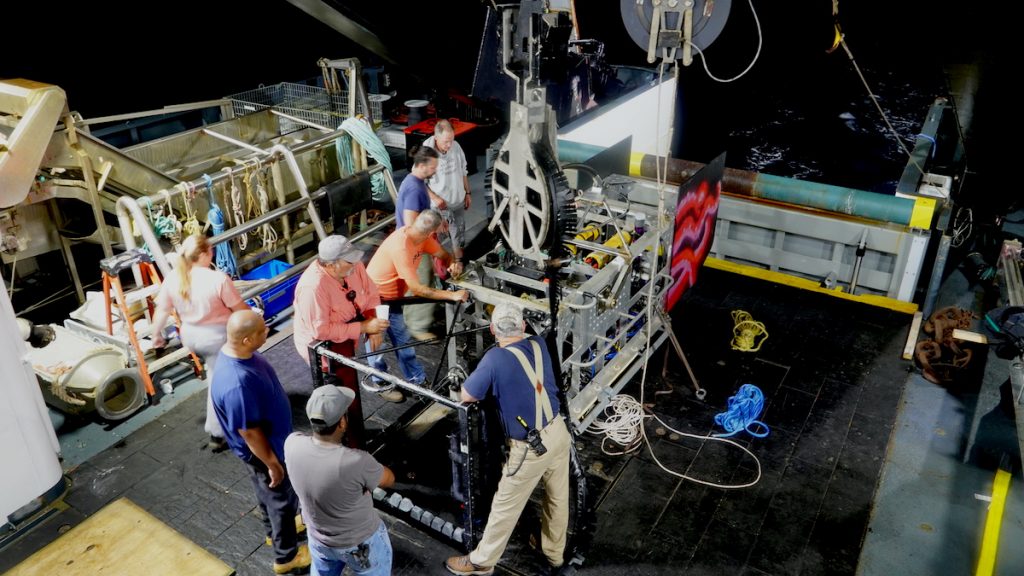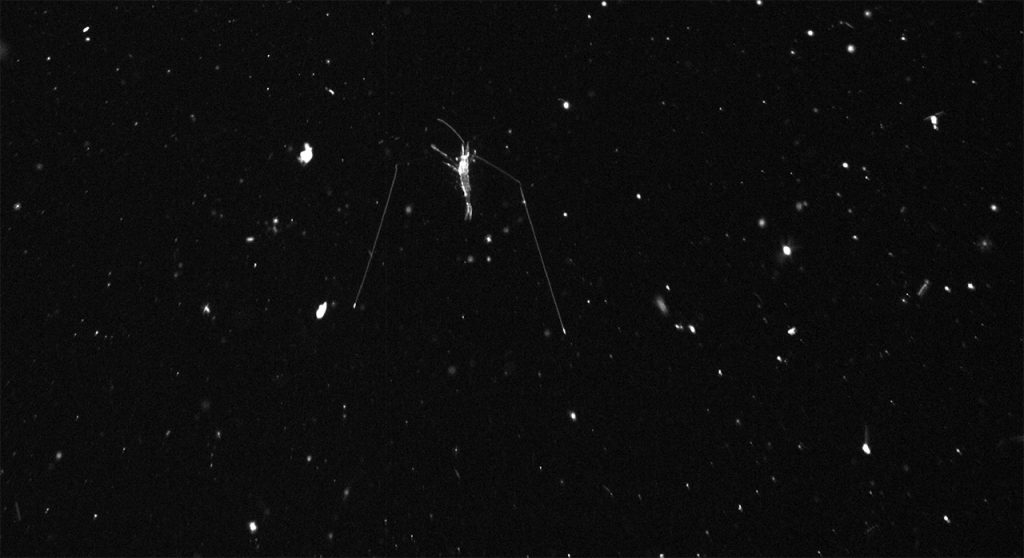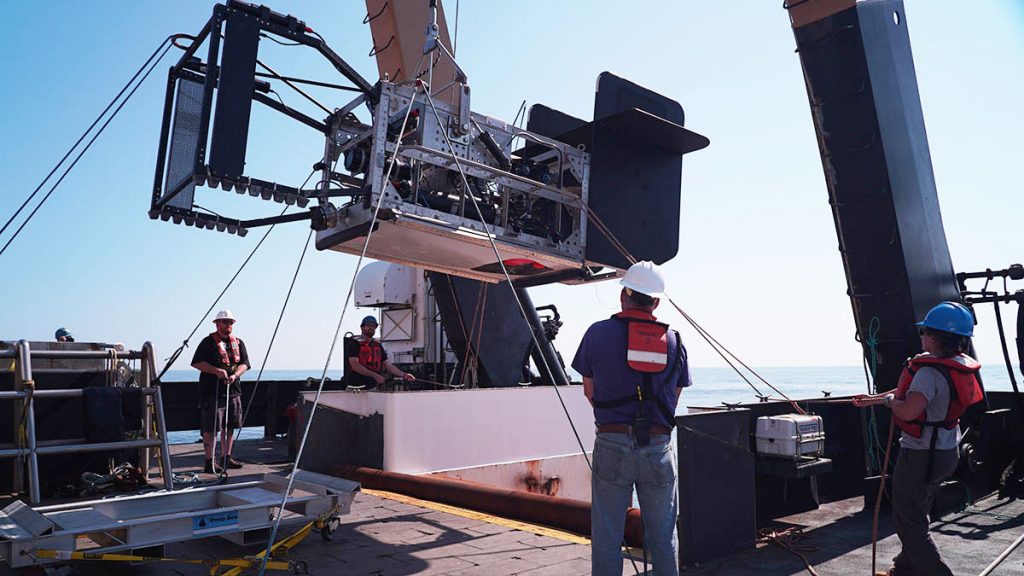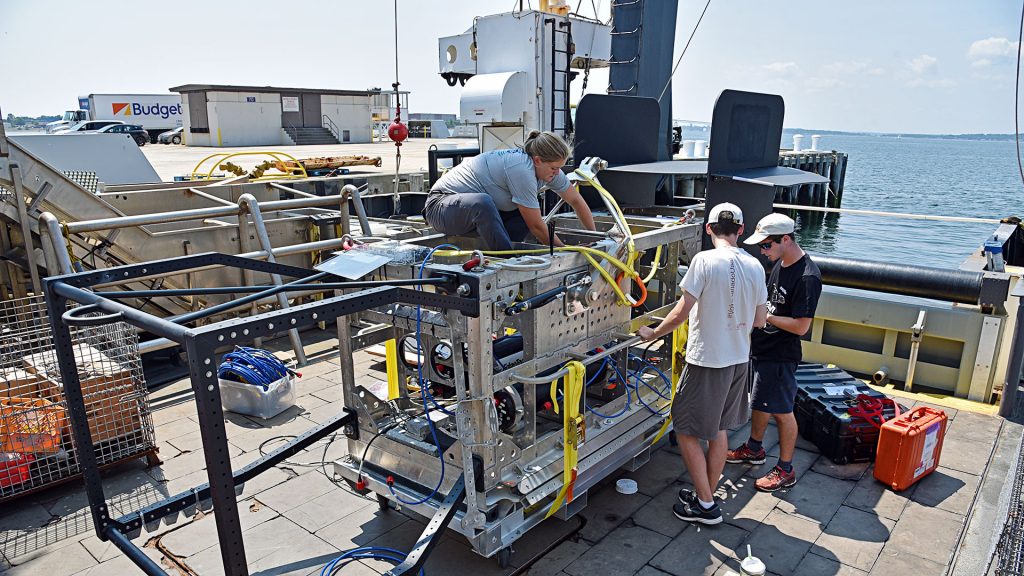Posts Tagged ‘Deep-See’
Field Notes: Unraveling the mysteries of migration with simultaneous sampling
OTZ project lead Heidi Sosik and WHOI senior research assistant Taylor Crockford review data coming in from the towed sled…
Read MoreField Notes: The show must go on
Sunset over the stern after a day of testing and attempting to repair a broken winch aboard the NOAAS Henry…
Read MoreField Notes: All is not lost
The echogram from aboard the NOAA ship Bigelow shows a distinct three-layer migration of creatures coming from twilight zone depths…
Read MoreField Notes: Technical difficulties
An engineer supervises as the MOCNESS is deployed for the first time during this OTZ cruise. The winch failed while…
Read MoreField Notes: The big reveal
The Deep-See is pulled back on board after its first deployment. The vehicle is used for acoustic monitoring and gathering…
Read MoreField Notes: Deep-Sea tests the waters
Engineering personnel make final checks and adjustments to the Deep-See before its first deployment. Weighing 2,500 pounds, the Deep-See requires…
Read MoreCounting fish—with sound
Acoustic measurements from a ship and an underwater robot help scientists estimate how many fish are in the twilight zone.…
Read MoreA Light in the Darkness
A key feature of Deep-See is the Large-Area Plankton Imaging System, or LAPIS camera, mounted on the front of the…
Read MoreOnce More Into the Twilight Zone
On July 25, scientists embarked on the 2019 Ocean Twilight Zone expedition aboard NOAA Ship Henry B. Bigelow. A team…
Read MoreThe Deep-See Peers into the Depths: A new vehicle illuminates life hidden in the ocean twilight zone
In the ocean’s shadowy depths lies one of the Earth’s last frontiers: the ocean twilight zone. It’s a vast swath of water extending throughout the world’s oceans from 650 to 3,280 feet (200 to 1,000 meters) below the surface, and it abounds with life: small but fierce-looking fish, giant glowing jellies, and microscopic animals that feed marine life higher up the ocean’s food web.
Read More






